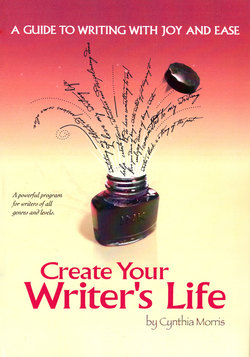Читать книгу Create Your Writer's Life: A Guide to Writing With Joy and Ease - Cynthia Morris - Страница 8
На сайте Литреса книга снята с продажи.
Impulse Writing
ОглавлениеImpulse Writing allows for a safe, fun exploration of your true voice. Modeled after Natalie Goldberg’s free writing in Writing Down the Bones (Shambhala Publications, 1986), Impulse Writing is writing that taps into your raw writing. It allows you to get your writing out without judgment or concern that it is good or right. Impulse Writing will give you confidence to express the vast and fascinating territory inside you.
Do an Impulse Writing session at least once per week. You can do as little as one ten-minute session or as many as three. Schedule your Impulse Writing time. Squeeze it into your lunch hours. Do it on your commute. Or try Impulse Writing before or after work to energize you.
You may wish to combine Impulse Writing with your journaling; it may be your journaling. Impulse Writing will build your skills and give you practice in writing this way.
Guidelines for Impulse Writing:
•Set a timer for ten minutes. After you have been writing regularly for ten-minute periods, you can gradually increase to fifteen or twenty minutes.
•Choose a prompt each time you begin a timed impulse writing session. It can be anything. The prompt is a diving board that will let you swim however and wherever you please. It can be a word, a phrase, or an excerpt from a book or poem. It can be a picture, an object, or a food. The point is to give you something to start writing about and then you are free to write whatever you wish. Try some of the following prompts:
•My favorite food…
•When I first…
•What I hate…
•If I had…
•Now that I …
•When I saw…
•Keep your hand moving. Once you start writing, keep going across the page or keyboard. Don’t pause to think or figure out where you are going.
•Don’t cross out or correct spelling or grammar. You know you are flowing when you start misspelling words or become nonsensical. Let your mind create unusual or fresh associations.
•Don’t censor yourself.
•Try an Impulse Writing that makes no sense. Your goal is for the writing to be as nonsensical as possible. This is incredibly fun and freeing and is a great way to loosen up your mind and enjoy language for the sake of it. See what happens for you.
Keep your Impulse Writing in a notebook. When the notebook is full, put it on a shelf. Keep writing and go back to it in a month or a year, and notice what it is like to read your writing with some distance.
Perhaps you've been doing Impulse Writing and enjoying the process. What should you do with all that raw writing that lives in your notebooks? Impulse Writing is often done for the practice of writing, for the enjoyment of it, and for developing your voice on the page. It can also be fun to take it a little further. Here are a few ideas for developing your Impulse Writing.
•Type it up as is. Notice the patterns in your writing, words you repeat, the pace and tone of your voice.
•Type it up and play with revising. Do this with curiosity and playfulness, rather than striving for perfection.
•Read your writing for honesty. Where do you stop yourself? Where did you write the nice thing instead of the thing you really wanted to write?
•Read it aloud. Notice what it sounds like to hear your own words.
•Send it to a friend for fun. Ask your friend to reply back with his or her own Impulse Writing. Perhaps you will develop a story together, a back and forth writing.
•Keep going. Begin writing where you left off. Write for ten minutes. See where the writing takes you.
•Develop it into a story, an essay, or whatever it wants to be.
•Whatever you do with your Impulse Writings, do it with a loving eye. Remember that you are writing with speed and without judgment, so don't be too critical when you are reading them.
•Use the creative detail of your Impulse Writing in a project you are currently developing. Let the freedom of this writing support your other work.
